Slowly but surely, I am getting more and more of these plants: they are relatively easy to grow and have amazing forms and flowers. They are called medusoid because they all grow snake-like branches from a central swollen stem, called a caudex. Whichever botanist named them was thinking of the mythical Greek Medusa that had snakes for hair.
They are almost impossible to identify when they aren't flowering because there are a few basic forms that look similar but each different species has distinct flowers.
This is Euphorbia gorgonis
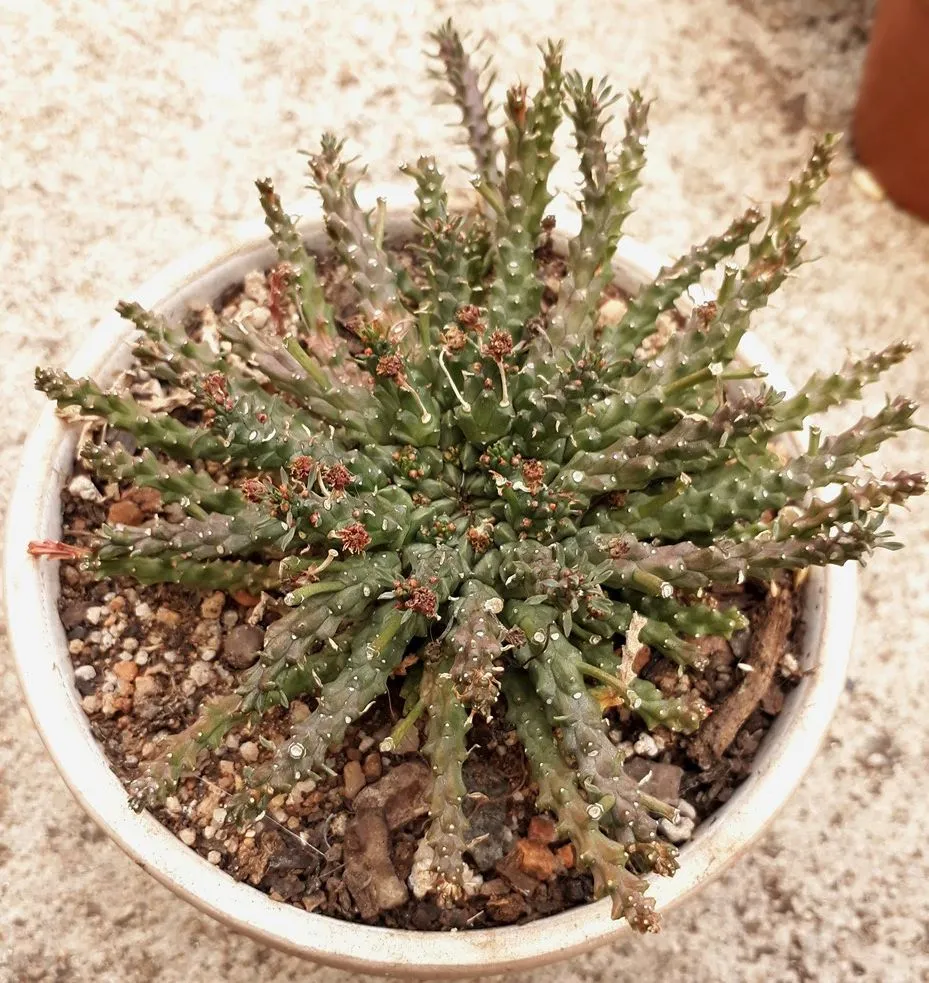
This one is Euphorbia flanaganii
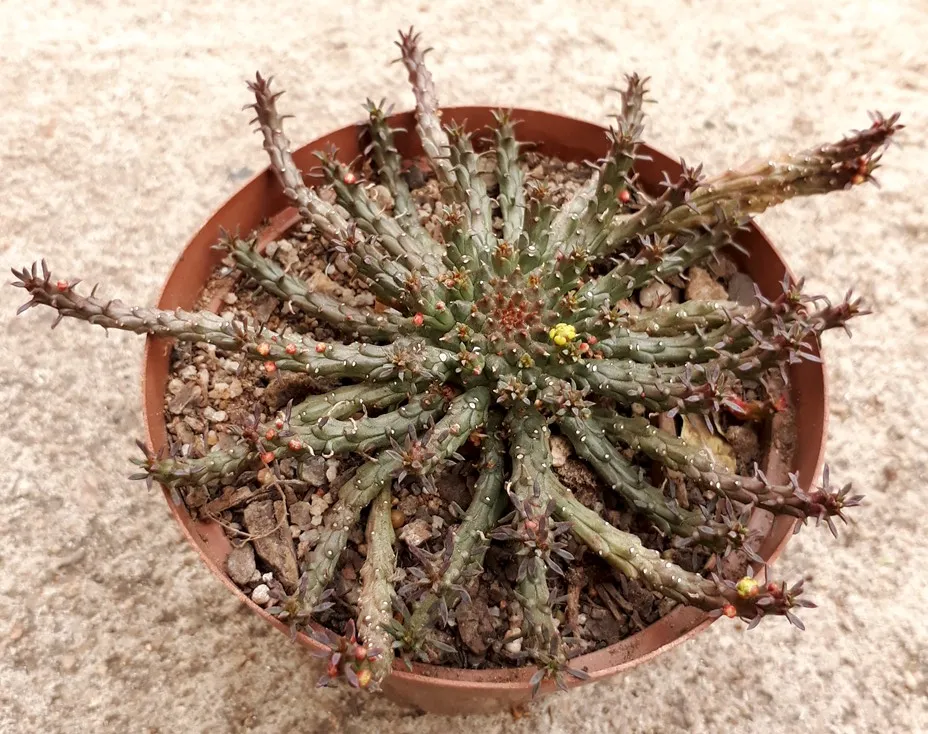
The flowers side by side clearly show a difference. Flanaganii is on the left and gorgonis on the right
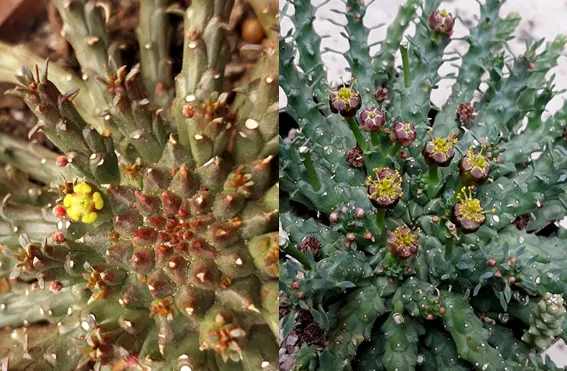
Sometimes the caudex makes an offset, forming a new, separate plant. You can see the new little plant forming just above my thumb
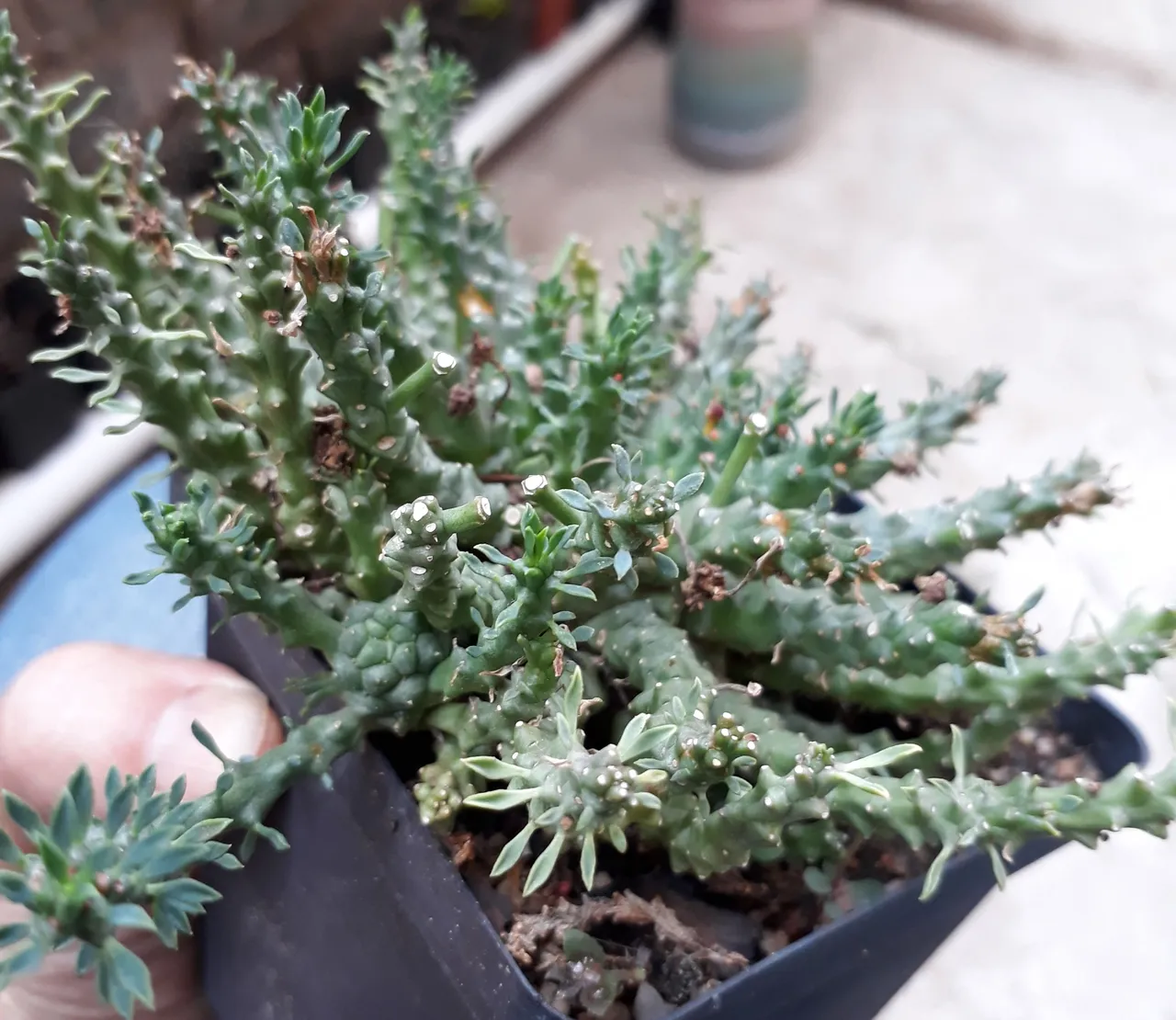
I have no idea what the next two plants are, I will have to wait for flowers
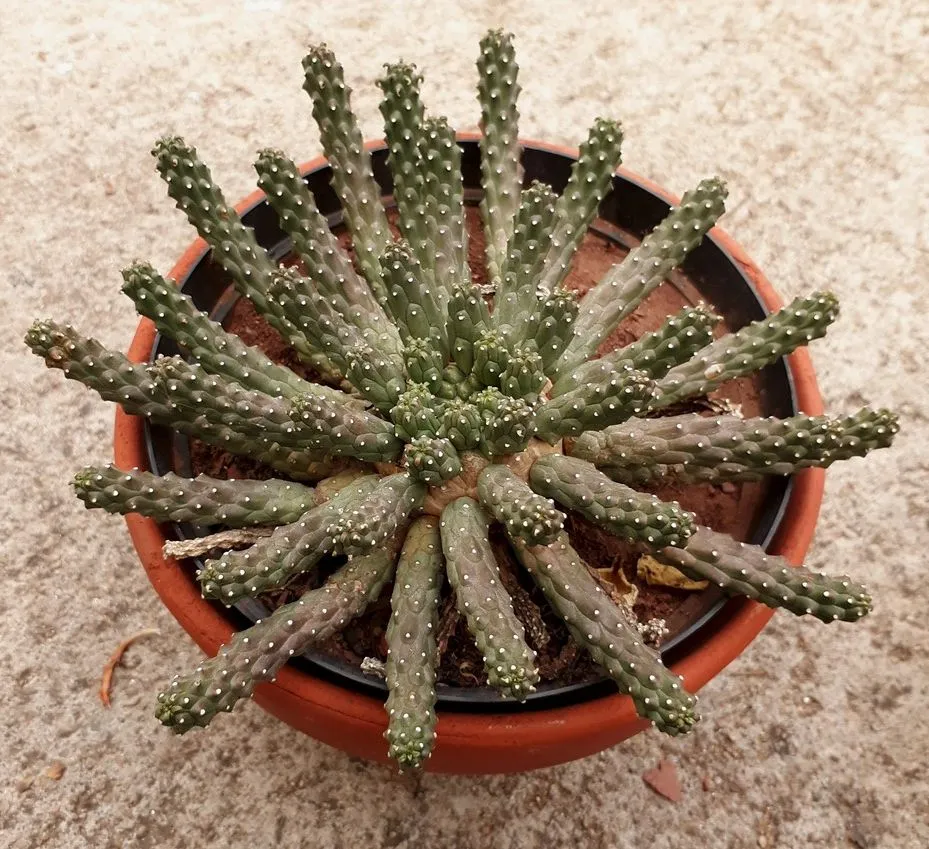
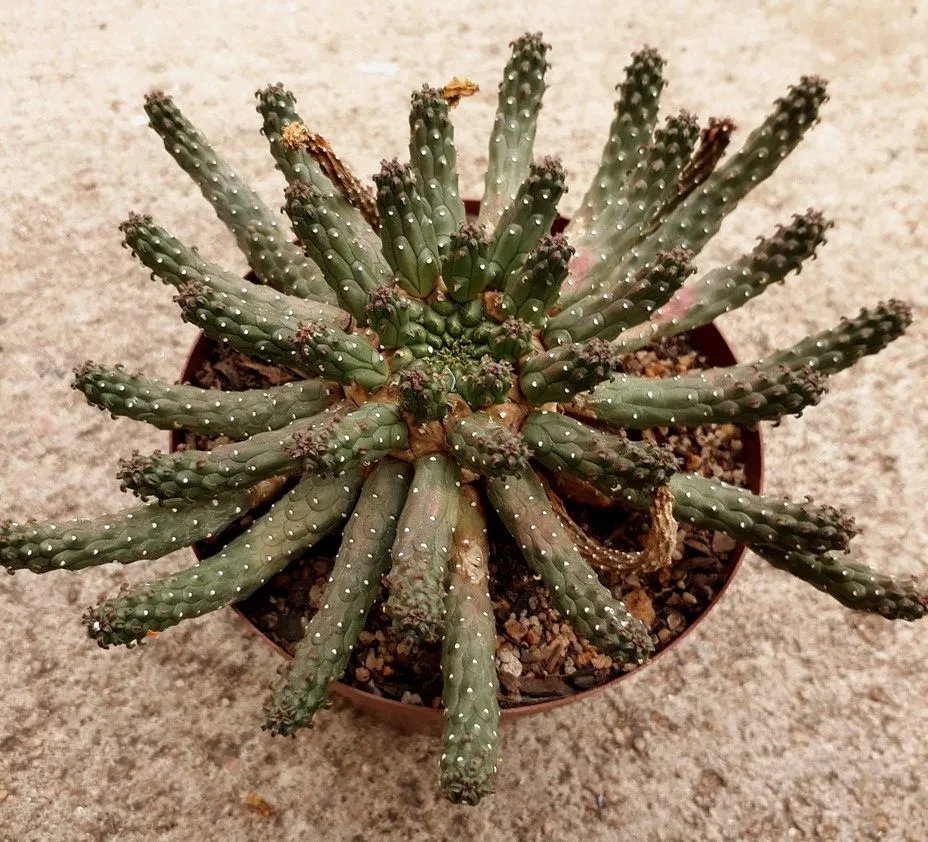
If you look carefully, there are some differences in the shape of the branches and the length of time the leaves remain but that may not actually be a significant difference.
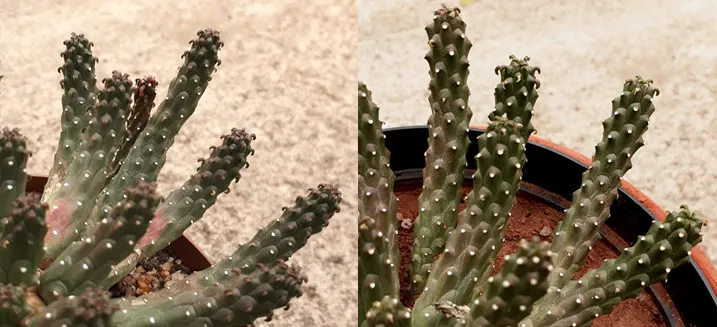
These two could be Euphorbia esculenta and inermis but only time will tell. I wish they would hurry up and flower and put me out of my misery of ignorance!
Medusoid Euphorbia are native to my country although the species I have here are found South of where I live. This one is native to my area but it died one year when it rained too much and I didn't realise that rainwater was getting in to the base of the pot and soaking the roots constantly, certain death for Euphorbia
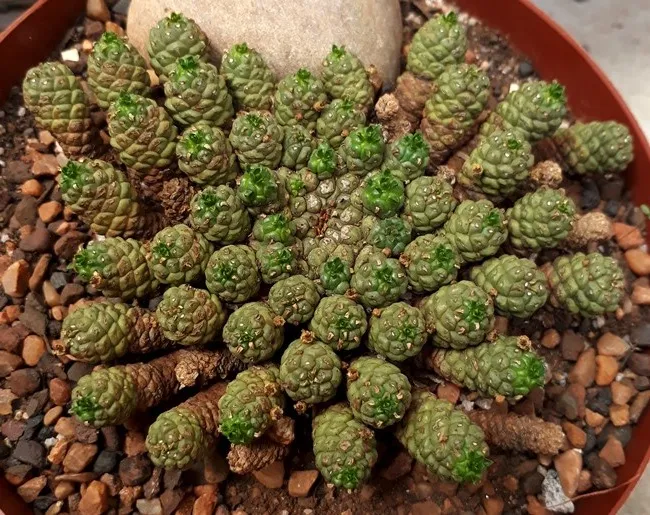
Rest in peace Euphorbia clavaroides truncata
If you want to propagate these plants, it can only be done by sowing seeds or separating offsets. If you try to grow one of the arms, it will root and grow, but no caudex will form.
